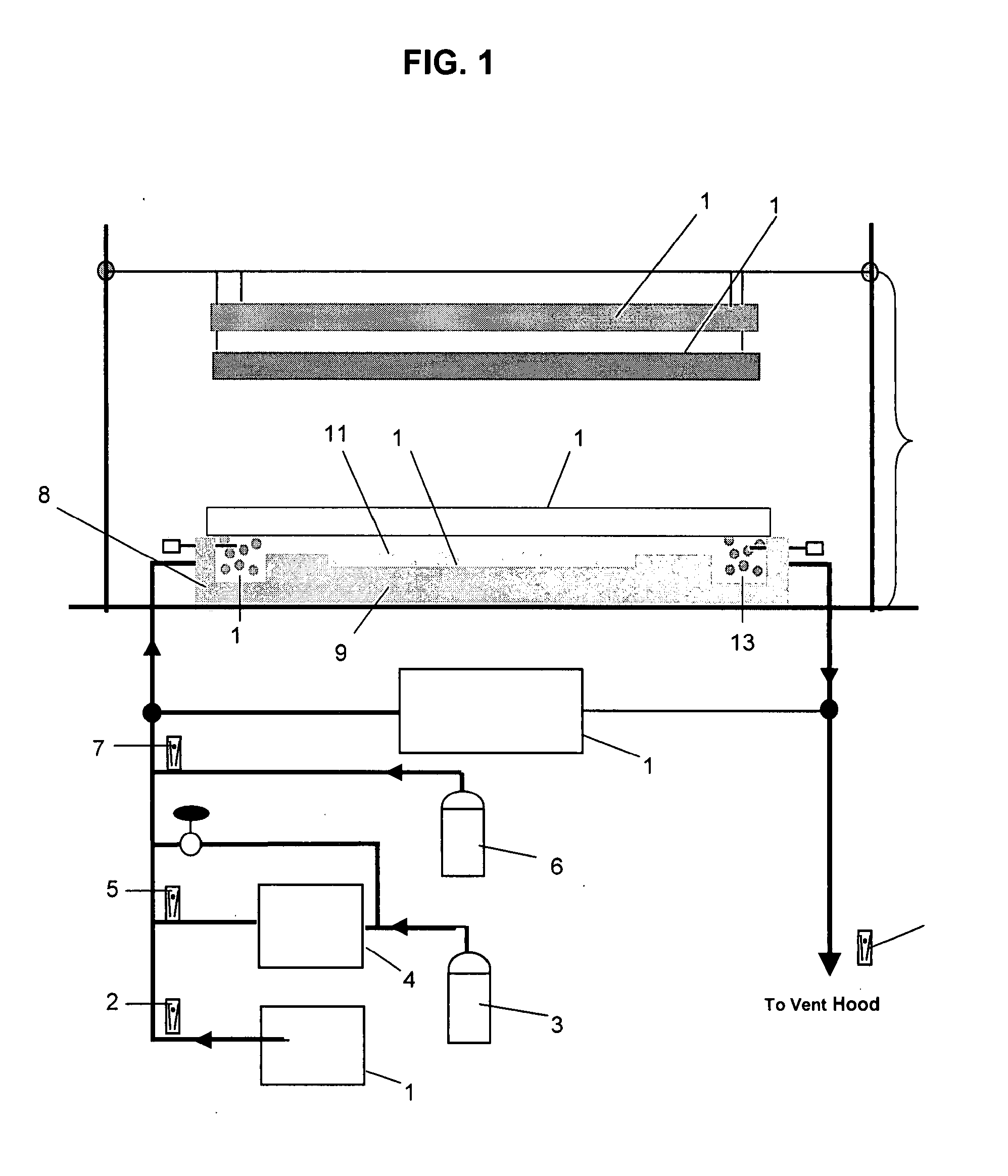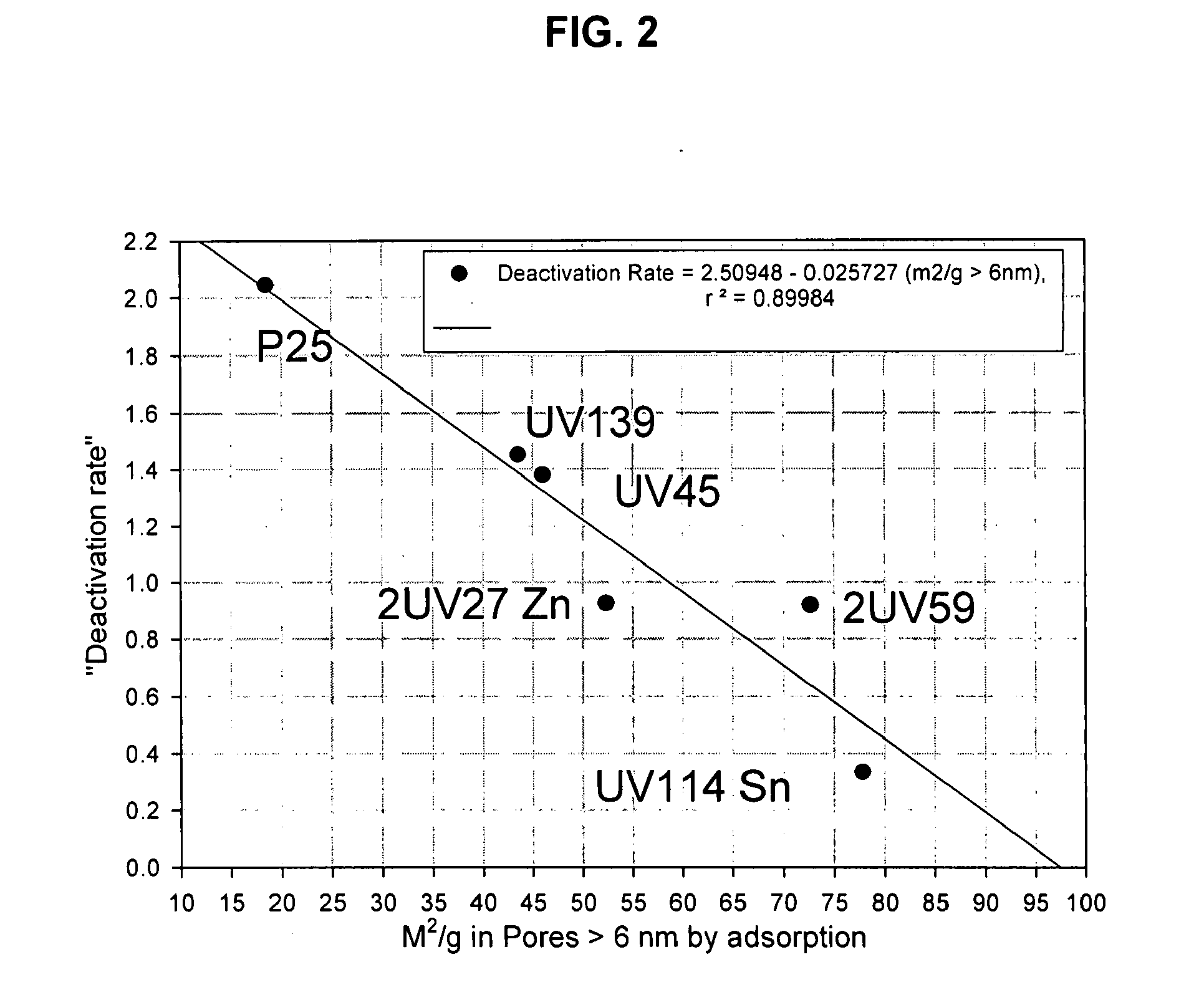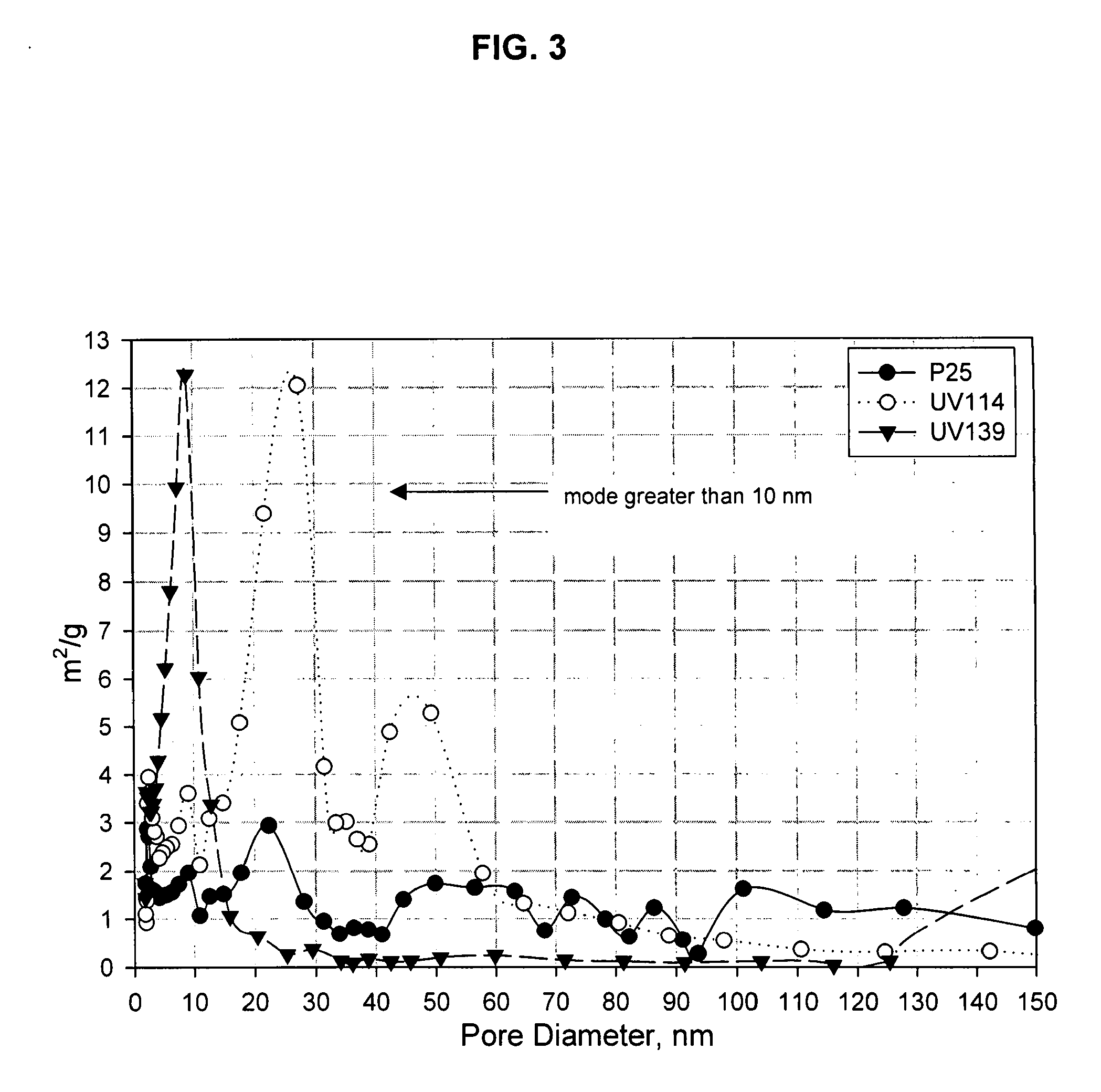Long-lived high volumetric activity photocatalysts
a photocatalyst and high volumetric activity technology, applied in the field of photocatalysts, can solve the problems of inability to effectively remove certain types of airborne contaminants, build-up of incomplete oxidation products, and filter clogging, etc., to achieve the effect of removing contaminants in the air
- Summary
- Abstract
- Description
- Claims
- Application Information
AI Technical Summary
Benefits of technology
Problems solved by technology
Method used
Image
Examples
example 1
[0060]In this example, the conventional BET-specific surface area measurement units of m2 / g are used for convenience. 1″ by 3″ slides were coated with an aqueous suspension of nanocrystalline TiO2, and allowed to dry. The TiO2 coating was sufficient to absorb 100% of the incident light when used in the intrinsic rate reactor according to FIG. 1. This reactor is a flat plate photocatalytic reactor having UV illumination that is provided by two black-light lamps (SpectroLine XX-15A). The spectral distribution was symmetrical about a peak intensity located at about 352 nm and extending from 300 nm to 400 nm. The illumination intensity was varied by adjusting the distance between the lamp and the titania-coated glass-plate. UV intensity at the reactor surface was measured by a UVA power meter. High-purity nitrogen gas passed through a water bubbler to set the desired humidity level. The contaminants were generated either from a compressed gas cylinder, such as Propanal / N2, or from a tem...
example 2
[0070]FIG. 7 illustrates the results of an experiment showing the effect of various hexamethyldisiloxane concentrations on the deactivation rate of a siloxane-resistant catalyst, 2UV27. The abscissa, siloxane exposure time, was normalized to a selected hexamethyldisiloxane level (90 ppb). The linear scaling factor was equal to the exposure time multiplied by the hexamethyldisiloxane concentration divided by 90. Each catalyst was exposed to a controlled level of hexamethyldisiloxane for various periods of time. Periodically, the photocatalytic activity, and hence the rate of deactivation, was determined at various times, using propanal as the probe gas.
[0071]As shown in FIG. 7, the further a data curve trends to the right, the lower the deactivation rate of the photocatalyst. As the rate of deactivation of the photocatalyst decreases, this will correspond to a longer photocatalyst life. As shown by the data curves for 34 ppb hexamethyldisiloxane and 90 ppb hexamethyldisiloxane, the r...
example 3
[0073]Several individual batches of high surface area, large cylindrical pore anatase-TiO2 were prepared with SnF2 additive, blended together and calcined in air at 500° C. for four hours. This was designated as the “Master Mix.” One portion of this calcined Master Mix was cooled, slurried, and applied to an aluminum slide, dried, and tested for activity and activation life in the same manner as described in Example 1. The average deactivation rate of the calcined Master Mix, after 50 hours of testing, was 0.32% of Initial Single Pass Efficiency / hour (% ISPE / hr). A second portion of this Master Mix was returned to the furnace and annealed for 72 hours at 400° C. in air. The average deactivation rate for the calcined and annealed Master Mix, after 50 hours of testing, was 0.08% (% ISPE / hr), a clear improvement in performance, as shown by the data in FIG. 8. By comparison, the P25 DEGUSSA reference catalyst had a deactivation rate of 1.6% ISPE at the corresponding 50-hour point. Under...
PUM
| Property | Measurement | Unit |
|---|---|---|
| pore size distribution | aaaaa | aaaaa |
| diameter | aaaaa | aaaaa |
| surface area | aaaaa | aaaaa |
Abstract
Description
Claims
Application Information
 Login to View More
Login to View More - R&D
- Intellectual Property
- Life Sciences
- Materials
- Tech Scout
- Unparalleled Data Quality
- Higher Quality Content
- 60% Fewer Hallucinations
Browse by: Latest US Patents, China's latest patents, Technical Efficacy Thesaurus, Application Domain, Technology Topic, Popular Technical Reports.
© 2025 PatSnap. All rights reserved.Legal|Privacy policy|Modern Slavery Act Transparency Statement|Sitemap|About US| Contact US: help@patsnap.com



